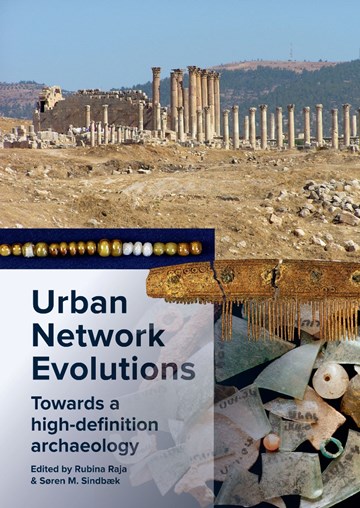Review of: R. Raja & S. M. Sindbæk (eds), Urban Network Evolutions. Towards a High-Definition Archaeology (Aarhus: Aarhus Universty Press)
Review in Bryn Mawr Classical Review by Matthew Selheimer (University of Leicester).

M. Selheimer. (2020). "Review of: Rubina Raja, Søren M. Sindbæk, Urban network evolutions: towards a high-definition archaeology. Aarhus: Aarhus University Press, 2018. 309 p.. ISBN 9788771846232", Bryn Mawr Classical Review 2020.05.12.
From the review (focusing on the chapter ‘Rome and its Cities’):
"The chapter titled ‘The Archaic period on the Forum of Caesar: the urbanization of early Rome’ by Nikoline Sauer Petersen is a representative example of the chapters in the Roman section, which feature short summaries of prior scholarship on the subject addressed in the chapter, and often include a brief plan for an upcoming research project. This chapter begins with a quick orientation to the archaic period of Rome during the reign of king Tullus Hostilius in the first half of the 7th century BCE and a mention of the scholarly debate surrounding the validity of historical sources such as Livy and Dionysius of Halicarnassus. Reference is made to extant remains from the period, such as the foundations of the Temple of Jupiter Optimus Maximus on the Capitoline hill, the temples near Sant’Omobono, and various locations in the Roman Forum itself to make the argument that Rome was “already at a relatively high level of urbanization” by the 7th century BCE (p. 41). Turning to the Forum of Caesar specifically, Petersen briefly reviews the findings of earlier excavations, which have revealed occupation in the southeastern area of the Forum during the archaic period, including a road and the remains of two houses. The author then discusses planned excavations in the Forum to enable a greater understanding of the archaic settlement in the area, with the intent to move beyond a focus on “graves, sanctuaries, and grave goods” from the prior excavations to “careful examinations of the smaller archaic remains…such as pottery, tiles, slag, metal, bones, and loom weights” in order to “trace the development of the houses…spatial organization, demographic patterns, and social stratification” (p. 42). Connecting back to the theme of “high-definition”, Petersen discusses how future excavations will seek to investigate undisturbed archaeological stratigraphy with typological pottery analysis employed for dating the stratigraphic levels and structures along with chemical composition analysis of remaining residues and clay to identify origins, cultural contacts and possible urban networks during the archaic period (pp. 42-3). Petersen indicates this will be accompanied by radiocarbon analysis to calibrate chronological sequences in the area as well. While none of these methods are innovative on their own, their combined use should provide greater clarity to our understanding of prior settlement under the Forum of Caesar, specifically, and trade networks in Archaic Rome, generally. At a length of just over five pages, including the space for three color photos, this chapter is only able to provide a brief overview of the topic of Archaic Rome. The bibliography (p. 44) provides references to works that explore the topic in far greater depth (Cornell 1995, Smith 1996). The research proposal covered in the chapter will be of keen interest to those interested in archaic Rome and the Imperial Fora.
The other short chapters in this section relate to projects planned or underway by UrbNET in Rome and other sites, and also include brief introductions to each topic. Again, the unifying theme is typically the use of multiple investigative methods to obtain a broader archeological understanding. These chapters include a brief overview of the site of Caesar’s Forum and its excavation history; a more in-depth review of the inhumation burials discovered there; a brief chapter on the role of Caesar’s Forum as a public space, its connectivity to the Imperial Fora, and how planned excavations intend to clarify spatial usage in the area; the allegorical poems of the Danish theologian and humanist Erasmus Laetus and their allusion to Vergil’s Ecologues, Julius Caesar, Augustus, and Rome; recent excavations in Doliche, including the finding of a 4th century CE Christian basilica with floor mosaics, and the contemporaneous spoliation of a Roman bath complex; and a brief overview of the site of Messene in the Peloponnese, its history during the Hellenistic and Roman Imperial eras, and a proposal for evaluating spatial usage and using geoscience techniques at the site."
